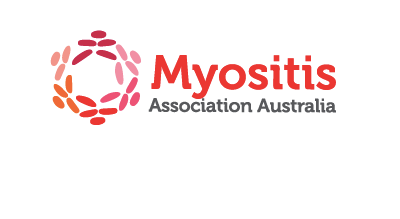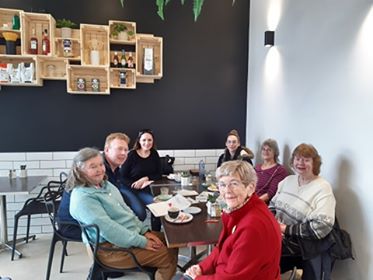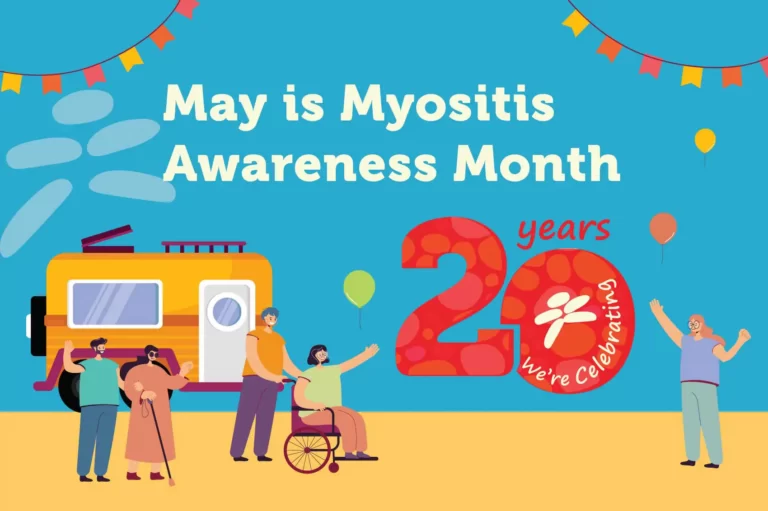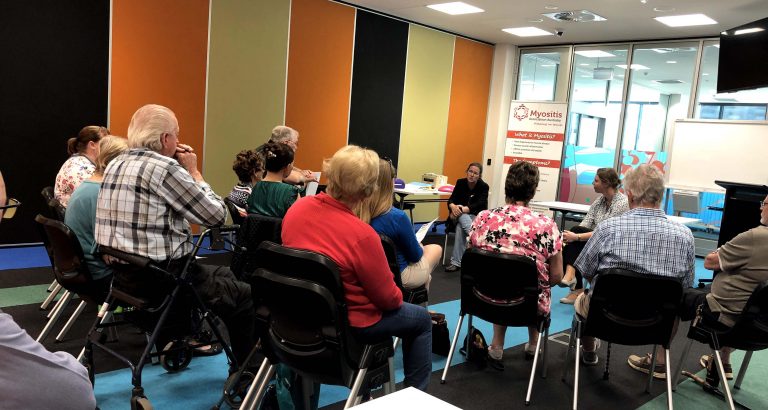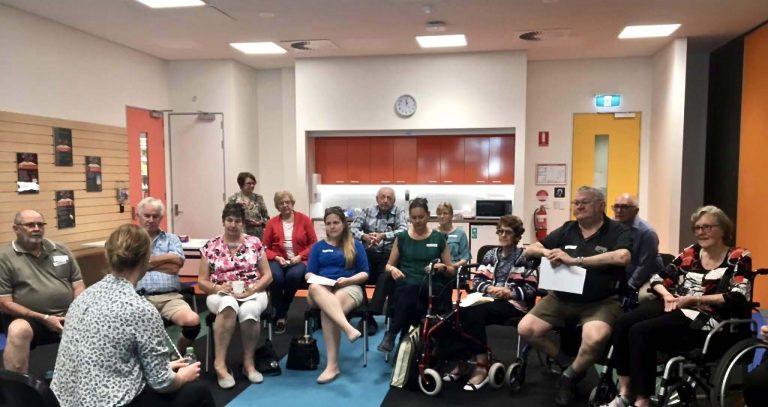IST NATIONAL CONFERENCE REPORT 2013
10 Year Anniversary CONFERENCE REPORT – ADELAIDE 19 – 22 August, 2013
Monday
Having met informally at registration and over drinks, our President, Trevor Neumann officially welcomed around 105 attendees, to the conference over dinner at the Arkaba Hotel.
Special guests, A/Prof Alan Sturgess, Patron (Rheumatologist St George Hospital Sydney), Bob Goldberg (TMA – Washington), Prof Bob Wortmann (Rheumatologist New Hampshire) and his wife Dottie (paediatric rheumatologist) were in attendance.
A/Prof Sturgess gave a highly amusing keynote speech essentially about the origins of the name Adelaide.
Founding members of the Association and State Co-coordinators were presented with Certificates of Service. Special presentations were also made to Anita Chalmers, Dan Joyce and Trevor Neumann in recognition of all their hard work for the Association and the organisation of the Conference.
A 10th Anniversary cake was cut by founding members Anita Chalmers and Cathy Boyes and shared by all over morning tea the next day.
Sponsorship for the meeting was provided by Julia Farr organisation; CSL Biotherapies; Arkaba Hotel; ScooterWorld; Muscular Dystrophy SA; Jacobs Creek; OfficeWorks; Robert Martin; Val Dempsey.
Most of the speakers presentations have been recorded and CDs can be purchased from Dan Joyce.
Photos taken throughout the conference by George Scott are available on CD.
Tuesday
Bob Goldberg – TMA (USA)
The day kicked off with Bob Goldberg of the TMA (USA) providing an overview of the work of the Association in the USA.
Bob reported that the TMA was formed in 1993 with a handful of patients. The TMA now has 10,000 patients on their database (not necessarily all members), 1200 physicians receiving information, 65 support groups and 4 paid staff. The focus of the TMA is upon education, research, support and advocacy.
Bob reported that 34 grants have been funded for a total of $3.5M. Funding for research was helped substantially by a bequest in 2002 of $2M. 25-30% of the funding has been spent outside the USA.
The TMA continues to raise funds. Individual donors make up 50% of the funding. Conference fees account for 10%. Fundraising events such as golf days raise 15% and 20% comes from corporate donors.
Awareness building has been a key goal and some of this has been achieved by having 20 physicians on the medical advisory board to supervise the research program. The TMA also has an information booth at the USA College of Rheumatology annual meeting. Another way in which they have raised awareness is by holding a myosotis symposium in conjunction with the annual patient conference whereby members of the medical board meet with local physicians in the city in which the conference is being held to pass on research information.
Another goal has been the establishment of Myovision – a national myositis patient registry based on a questionnaire which was mailed to patients.
Prof Bob Wortmann – New Hampshire
Bob titled his presentation – The Bad and The Good.
He mentioned that prior to prednisilone the mortality rate was 50% but has now been reduced to 10%. It has remained unchanged since the 1950’s.
He mentioned that recent research from a team in Sweden has shown that exercise has an anti-inflammatory benefit. 3 days of aerobic exercise (walking 15 min x 2 a day) alternating with 3 days of anaerobic exercise (starting at a very low level with few repetitions) has been found to improve strength and reduce the levels of pro-inflammatory chemicals in the muscles. The exercise could also include some hydro-therapy. It’s critical that whatever exercise is undertaken is tailored specifically for each patient and care is taken to not fatigue the muscles.
He also discussed the other research which has been undertaken since 1981 – 2013. Details can be obtained from the CD of his presentation. Of particular interest however was the outcome of some of the research which has shown the presence of certain anti-bodies or genes which will assist in diagnosis and identify which drugs may be effective in treating individual cases. Attempts have also been made to try to improve the assessment measures to aid diagnosis.
Bob also discussed the Follistatin Gene Therapy phase I trial which is being undertaken in 9 IBM patients by Prof Jerry Mandel. Each group of 3 patients has been receiving increasingly stronger dosages of the gene. This involves inserting a gene (via use of the common cold virus) directly into effected muscles. The gene blocks the function of myostatin which blocks muscle metabolism leading to weakness and shrinkage. The side effects have been tolerable. It’s expected that the trial will be expanded to more people if the results of phase I are successful.
Medical Panel Q & A session
The panel, which was chaired by Bob Goldberg, comprised Prof Bob Wortmann, A/Prof Alan Sturgess, Dr. Craig Davenport (Rehabilitation doctor – Nowra), Dr.Vidya Limaye (Royal Adelaide hospital). Prior to the panel discussion, all the attendees had broken into their condition groups and compiled a list of questions.
This was a terrific session covering a wide range of questions. In brief, topics discussed covered:
Tendon transfer for hand muscles – this is performed for other neurological conditions (eg post stroke) and can be appropriate for purposes of achieving increased movement or hand grip in some patients.
Inflammation of the lungs – some myositis patients can experience a significant impact on their lungs from interstitial lung disease. It is most frequently seen in DM/PM. Anyone over 60 is recommended to receive the pneumonia vaccine.
Overlap conditions -other health issues are known to overlap with myositis – scleroderma, sjoegrens’s disease, lupus – they share genetic predisposing factors and complicate the diagnostic process.
Muscle biopsy – a needle biopsy of the vastis lateralis is generally preferred and typically 4 probes are taken from the site. It is found that this form of biopsy yields 90% useful tissue. An open biopsy can follow at a later stage if it is thought that more information is required and this is usually performed on the thigh or shoulder.
Rheumatologists and Neurologists are both helpful specialists for myositis patients but it’s important for them to talk to each other.
Vaccinations – there’s no evidence that vaccinations can contribute to the development of an autoimmune disease.
Rituximab – is not used as a first line treatment because there’s less experience of it in Australia but if a patient proves to be refractory to other treatments, rituxmimab can be accessed. One IBM patient at the conference had improved on this drug.
Incontinence – is not considered to be connected to myositis.
Stress – is recognised as exacerbating muscle weakness.
Stem Cell transplants- there have been a couple of cases of PM which have been successful but it should be considered very much a last resort because the side effects for the drugs which have to be taken to knock out the immune system are very toxic.
Cortisone – is known to have long term toxicity resulting in osteo porosis, diabetes, skin thinning, mood swings, fluid retention and weight gain. Combining it with methotrexate can enable lower doses of cortisone to be taken.
Dysphagia – there is a lot of muscle co-ordination required to swallow. Some patients have dysphagia as a first symptom whereas others will develop it over time. A speech therapist is recommended to look after swallowing issues.
JDM – when JDM goes into remission it is generally permanent.
Cancer – it’s recognised that myositis can increase the risk of cancer and annual tests should be performed – mammogram, tumour markers. DM may give rise to the greatest risk and some links with lung, bowel, ovarian and prostrate have been found.
Independent Living Centre – Laura Gum (SA)
A very lively presentation, perfect for the post lunch spot, was provided by Laura Gum.
The Independent Living Centre is an Australia wide government organisation which can be contacted on 1300 885 886 and www.ilcaustralia.org.au. The website is sorted by product and State.
The centres do not sell any products – they hold collections of products for demonstration purposes only and will then provide contact details as to where to locate and buy the products. From the items displayed and discussed during the presentation, a visit to one of the centres is highly recommended.
We learnt some gems – patients need their knees higher than their hips to open their bowels. Washable continence pants are available for both genders. Nighties with Velcro at the shoulders are available. Every woman should have a Sheewee in her handbag!
Home Support and Care Services – Jane Hyde (SA)
This session walked us through the minefield of acronyms in the area of care services – HACC, ACAS/ACAT etc. Each State has it’s own system and there’s also Commonwealth provided services/funds. Individuals are advised to research the issues relevant to their state. See www.health.gov.au/hacc.
Wednesday
Rehabilitation and Alternative Treatments – Dr. Craig Davenport (Nowra).
Dr. Davenport gave a very practical and thoughtful presentation drawing on his Eastern and Western medicine qualifications and experience.
He discussed the benefits of exercise in more detail – recommending starting early to minimise muscle loss and increase endurance. He recommended moderate resistance exercise in preference to high resistance and mixing it with aerobic exercise. Start low and increase intensity, short repetitions and slow progression.
If the disease is in an active state, have a very closely monitored program. If there’s significant and long lasting muscle pain or weakness – back off the exercise. Be cautious with loading tendons if you have been a long-term cortisone user.
Hydrotherapy is a good option provided there is safe access to the pool and you have no breathing difficulties.
Creatine supplements have been shown to have some benefits because they enable more exercise to be undertaken but it’s recommended to not take them for more than 2 – 3 months.
Complementary medicines/therapy can be worth exploring but talk openly to your doctors about them. Consider massage, acupuncture, herbal medicine, touch therapy, mind/body cognitive behavioural therapy, tai chi, yoga, Pilates, Alexander techniques.
IBM Research – Dr. Merrilee Needham (WA).
Merrilee’s presentation was down to earth and provided optimism for IBM patients, assisted by a press release overnight from Novartis (Swiss drug company) about the treatment BYM338.
The FDA has created Breakthrough therapy designation to expedite the development and review of new drugs for serious or life-threatening conditions. This designation is based on the results of a Phase II proof-of-concept trial that demonstrated Novartis’ BYM338 substantially benefited patients with sIBM compared to placebo. The study results will be presented at the American Neurological Association meeting on October 14 and are likely to be published in a major medical journal later this year.
BYM338 or bimagrumab, a novel, fully human monoclonal antibody developed to treat pathological muscle loss and weakness, was also granted orphan drug designation in sIBM in both the U.S. and Europe in 2012.
Phase III trials likely to commence in the next year and may involve some Australian patients at centres in Sydney and possibly WA. Merrilee Needham is contracted to Novartis to conduct the trial in Australia if it proceeds..
One of our members with a diagnosis of IBM has responded well to Mabthera (Rituximab). Rituximab is also a monoclonal antibody which is not used as a first line treatment because there’s less experience in using it to treat myositis but if someone is refractory to other treatments it is possible to access it.
Merrilee displayed slides which demonstrated that the pathology for polymyositis and IBM looks identical at the early stage of the disease. The vacuoles which are characteristic of IBM may not show up until later in the disease. The pathology can lead to patients being diagnosed with polymyositis initially and then IBM later following a subsequent muscle biopsy.
It’s thought that there may be several variants of each of the forms of myositis with overlap of symptoms. The classic IBM is a very selective disease which shows specific symptoms of weak fingers, loss of thigh muscle and some swallowing difficulties. The jury is still out on whether IBM is an autoimmune disease or not.
Merrilee mentioned that there has been some research which has identified the presence of a particular antibody which is almost certainly present in patients with IBM. This should lead to much more accurate diagnosis via a blood test without the need for a muscle biopsy.
Merrilee was inundated with patients after her presentation. She spent quite a long time talking individually with registrants, testing strength and offering comments and suggestions. Everyone at this session was impressed with her presentation, approachable manner and ability to explain difficult subject matter very simply. We all wanted more of Merrilee!
Concurrent JDM session – Dr.D Singh and Dr. Christina Boros
Chronic Anxiety and Depression – Jane Barnett (SA)
This session canvassed the risk factors for anxiety and depression and the need to get help. Some of the factors identified were:
- family history
- isolation, loneliness
- physical health issues, pain
- retirement, loss of value
- loss of independence
- grief
- the role of carers
- accumulated losses
- displacement
Depression is common for people with a chronic disease. It’s important to seek help early and with treatment most people recover from depression. Depression is not a weakness or shameful.
We were advised that it’s possible to obtain a chronic disease management program for 5 sessions following a referral from a GP. It’s also possible to obtain a series of visits with a psychologist on referral from a GP.
Health Direct provides useful online advice – 1800 242 636
Beyondblue info line is 1300224636 – website www.beyondblue.org.au
An online Men’s Shed is worth investigating at www.theshedonline.org.au.
Carer’s Discussion Group – Debbie Smith (SA)
A concurrent session was run for carer’s facilitated by Debbie Smith a counsellor with MDSA. It was reported that this was a very useful session enabling carers to bring their issues to the surface within a supportive group.
Diet – Alison Shanks (SA)
Attendees were advised that there is no scientifically recognised diet specific for myositis patients. Healthy diets which are high in protein, low in fat and carbohydrates were recommended, with at least 5 serves of vegetables and 2 of fruit per day. Cortisone impacts on bone density so ensure calcium is in the diet for bone strength. Diabetes can be a side effect of cortisone and if present, patients should obtain expert advice in relation to their diet. Cortisone also tends to make patients hungry and snacking on high fat or sugary foods should be avoided.
Tai Chi – Rosalie Lackie (SA)
The last session of the conference provided a relaxing conclusion with Rosalie Lackie introducing the attendees to the practice of Tai Chi and meditation. Everyone joined in for 2 short meditation exercise and enjoyed a demonstration of Tai Chi.
General Business
The conference concluded with a brief business meeting of the Association at which a proposed amendment to the constitution was raised to allow for appointment of life members. The motion was carried with a view to achieving the amendment by the AGM.
There was also general agreement to hold another conference in 2 or 3 years time – possibly in Adelaide again.
One aspect of the conference that should not go unmentioned is the social interaction that occurred between attendees over the two and a half days. This started right from Monday afternoon’s registration session where people greeted each other with smiles of delight and friendship at being together with others who shared their myositis condition. The cameraderie and bonding that occurred spontaneously between strangers was wonderful to behold and the positive energy cemented the whole gathering together over the two and a half days. As people got to know each other friendships formed and small groups were to be found sitting around in the lounge areas or perched at high tables in the bar area. The nature of the Arkaba venue, it must be said, was very conducive to developing social interactions between attendees and was one of the very good aspects of this conference.
Thanks was expressed again for the enormous amount of thought, time, effort and physical energy which Trevor and Merilyn Neumann; Anita and Geoff Chalmers and Dan Joyce had put towards making the meeting a tremendous success.
Recordings of the Conference sessions are available – contact mail@myositis.org.au.
